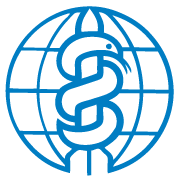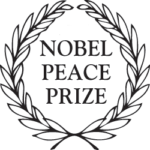Nuclear weapons pose the most acute existential threat to humans and the environment. Unlike conventional weapons or other weapons of mass destruction, nuclear weapons instantaneously wipe out entire populations, level cities, and devastate the environment. Moreover, they produce radioactive contamination that causes a life-long risk of cancer and other illnesses.
Learn about the humanitarian impacts of nuclear weapons below.
Catastrophic humanitarian impacts following a nuclear detonation over a city:
Physical Injuries
Anyone in the immediate vicinity of the blast will be instantly vaporized.
Those who survive the immediate detonation will suffer:
- Third degree burns on exposed skin;
- Crush injuries, including ruptured organs [particularly lungs], fractured skulls, and compound fractures;
- Sudden deafness due to ruptured eardrums; and
- Temporary blindness by the initial flash.
Since doctors and nurses will be among the victims, and area hospitals will be destroyed or damaged, surviving medical services will be unable to assist those in need.
Ionizing Radiation
Acute radiation sickness can be fatal within hours, days, or weeks due to:
- Bone marrow destruction, leading to extreme susceptibility to infection and uncontrolled internal bleeding;
- Impaired healing;
- Irreparable gastrointestinal damage and dehydration; and
- Central nervous system dysfunction
Radiation also has long-term effects:
- Multiple types of cancer (leukemia, multiple myeloma, thyroid, stomach, colon, lung, breast cancer, among others)
- Cardiovascular disease
- Cataracts
- Birth defects
- Infertility and subfertility
- Hemorrhaging, infections, and more
Nuclear Famine
A single nuclear weapon can destroy a city and severely injury or kill most of its people. A nuclear war using less than 3% of the world’s nuclear weapons and involving any of the nine nuclear armed states would result in:
- Upwards of 100 million direct fatalities;
- Average global temperature dropping about 1.3 degrees Celsius due to tons of soot and debris blocking the sun and damaging the ozone layer;
- Global crop failure, leading to famine for a third of the world’s population;
- Particularly high impacts over the high latitudes in the Northern Hemisphere, in nations such as Canada, Finland, Norway, Sweden, and Russia.
A full-scale nuclear war between the United States and Russia would kill an estimated 5 billion people worldwide within two years.
Response
In the aftermath of a single nuclear detonation or nuclear war, doctors and healthcare workers would be killed or severely injured along with the general population. Hospitals, clinics, and other medical facilities would be destroyed or rendered unusable. Physicians and first responders not themselves victims would be unable to work in the totally devastated, radioactively contaminated wastelands that would extend for kilometers beyond ground zero, making it impossible to reach and treat survivors.
There can be no meaningful medical response following any use of nuclear weapons. We must focus on prevention.
The only way to ensure that nuclear weapons are never used is to eliminate them completely. The United Nations Treaty on the Prohibition of Nuclear Weapons, adopted by the UN General Assembly on 7 July 2017 and which entered into force on 22 January 2021, provides the legal and moral foundation for the eradication of nuclear weapons.
Additional resources
English:
- LearnAboutNukes.com [also available in Swedish, Norwegian, and Russian] (Svenska Läkare mot Kärnvapen / IPPNW Sweden)
- No Place to Hide: Nuclear Weapons and the Collapse of Health Care Systems (International Campaign to Abolish Nuclear Weapons, 2022)
- Nuclear Famine (IPPNW, 2022)
- Humanitarian Impacts of Nuclear Weapons: IPPNW Campaign Kit (IPPNW, 2014)
Norwegian:
- Ingen Hjelp Å Fa: Atomvåpen og helsevesenets kollaps (Norske leger mot atomvåpen / IPPNW Norway, 2023)
Swedish:
- Förebygga är enda medicinen (Svenska Läkare mot Kärnvapen / IPPNW Sweden, 2023)

